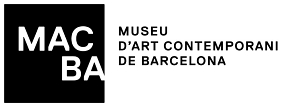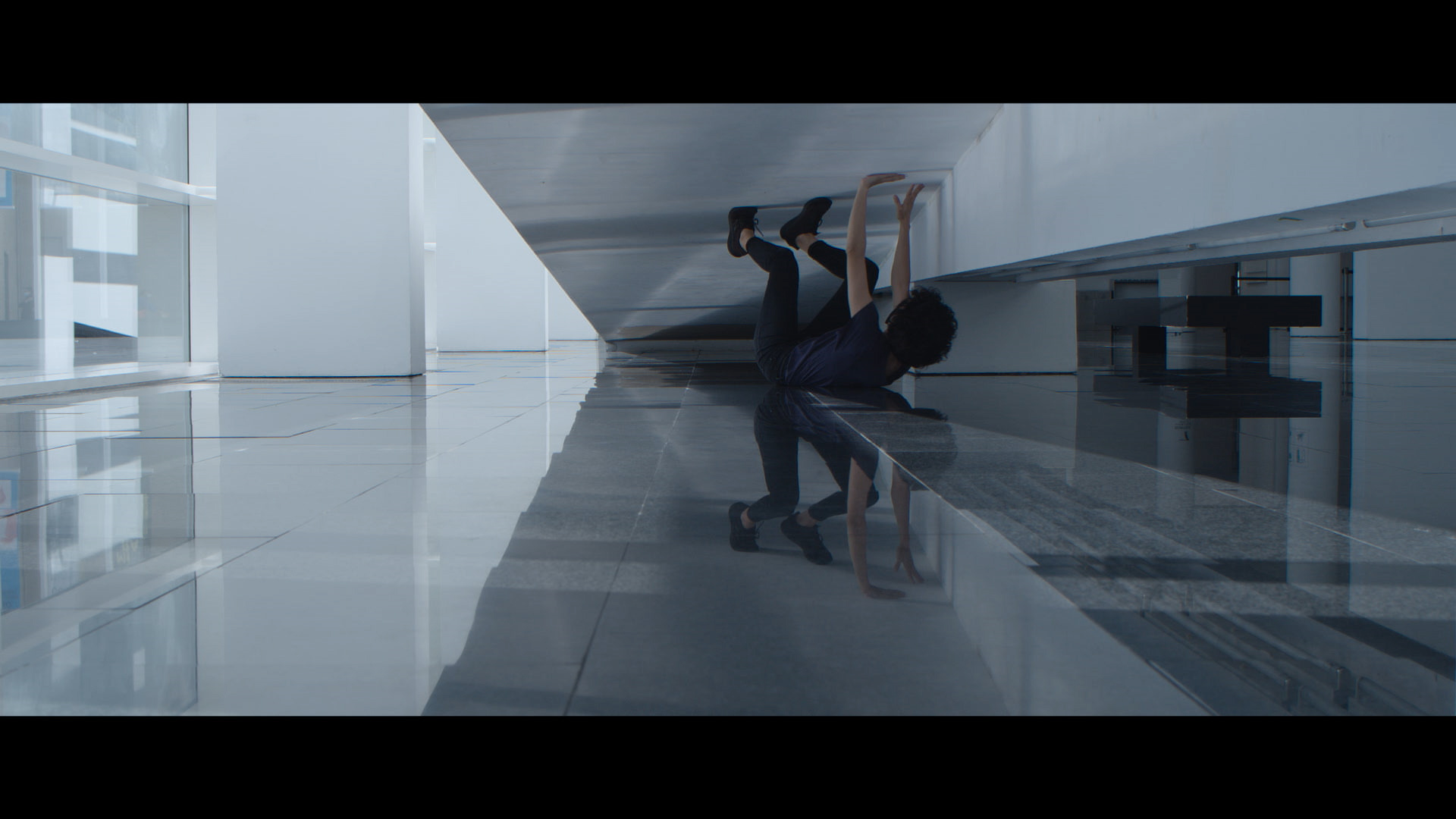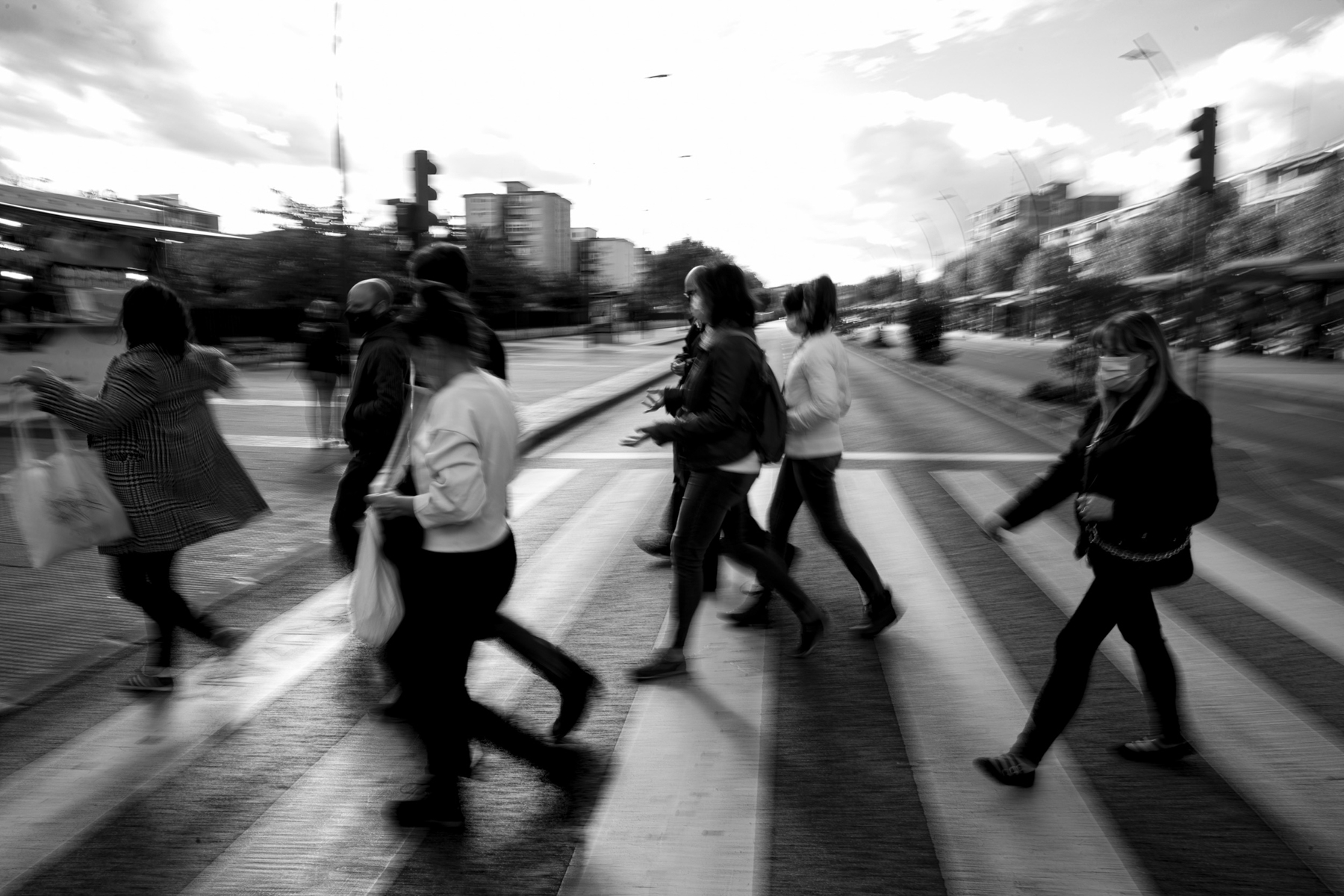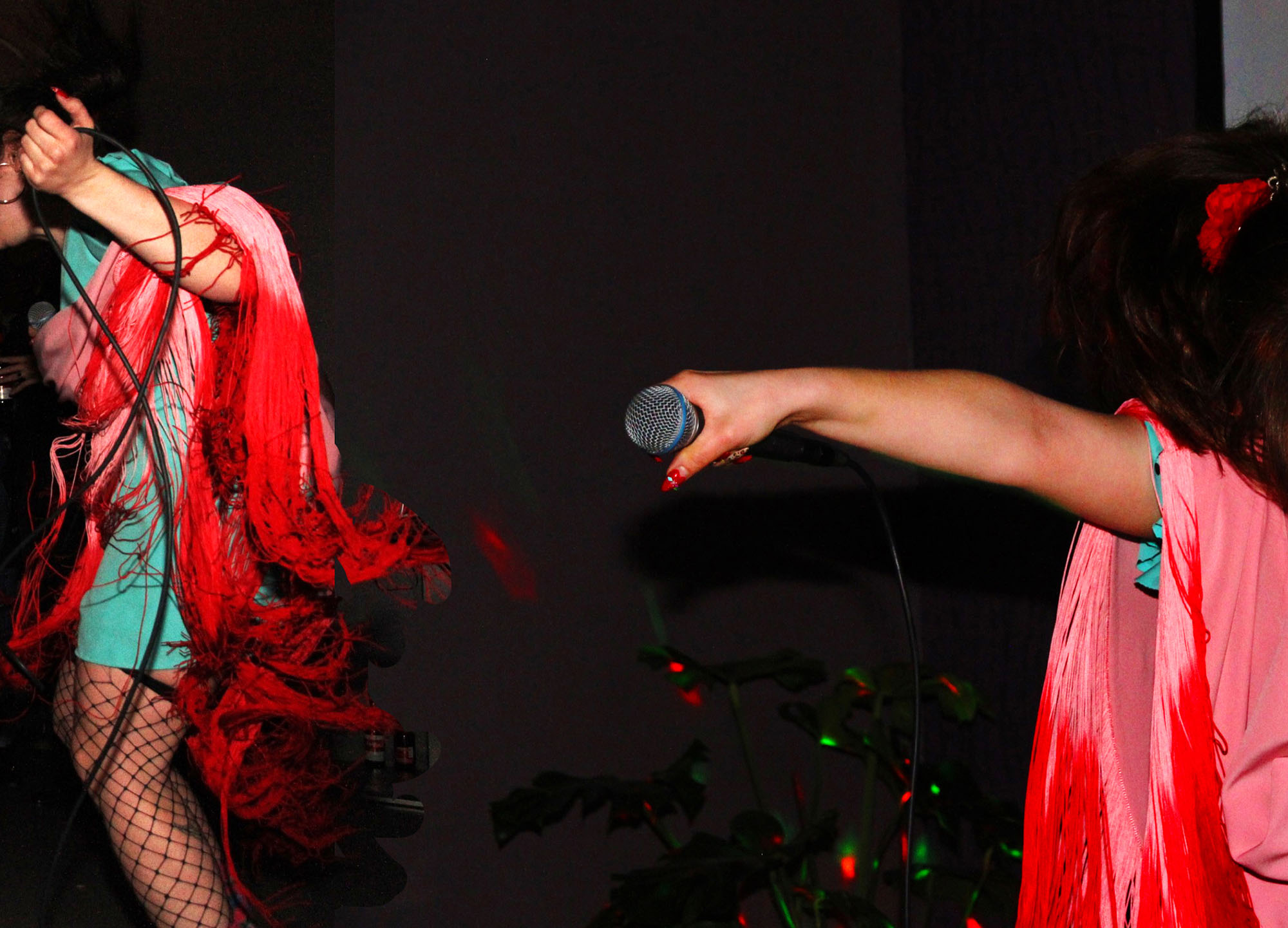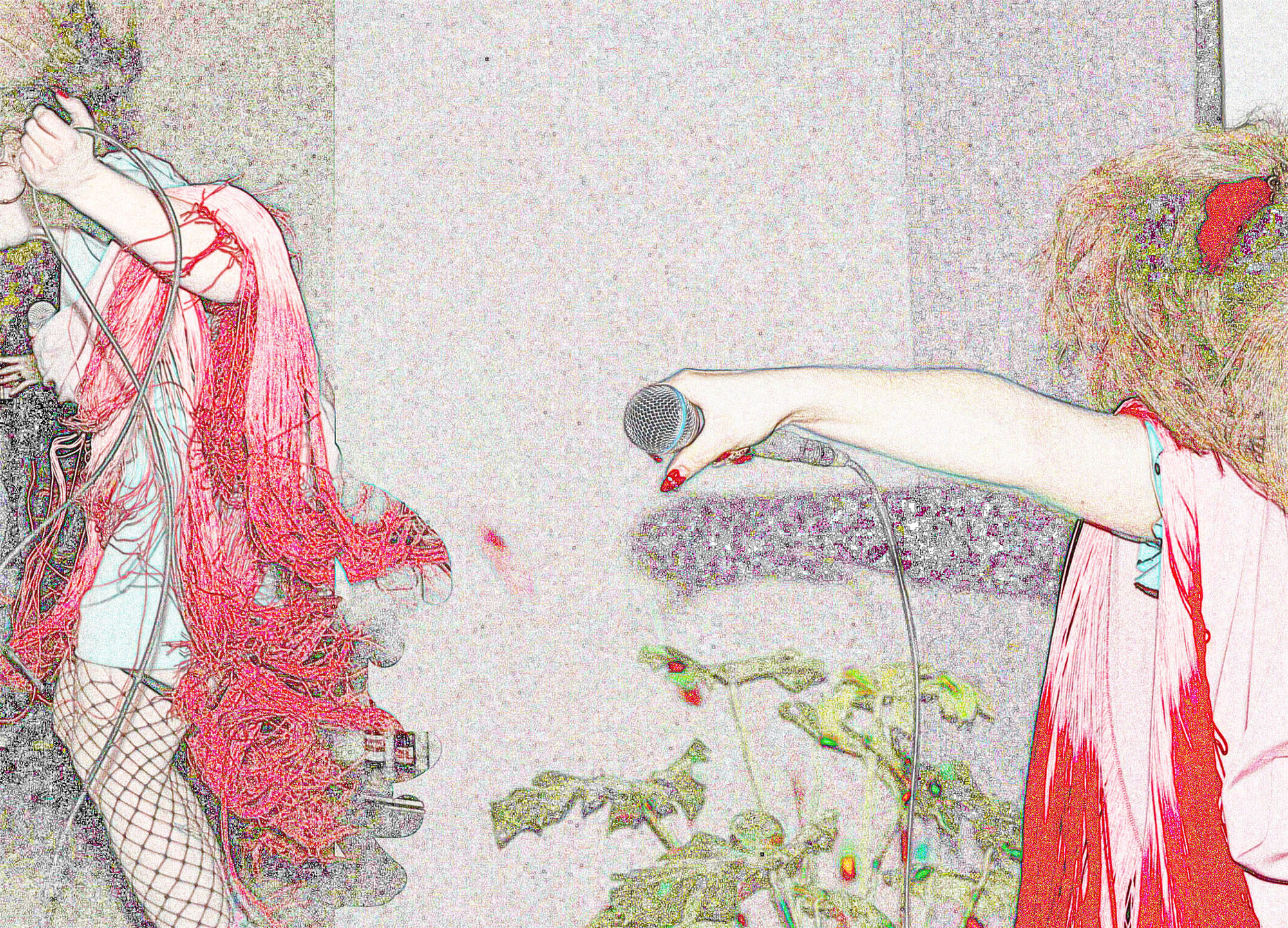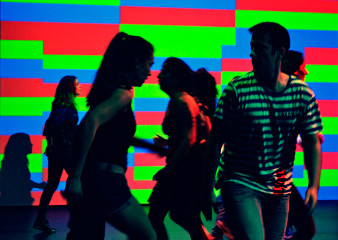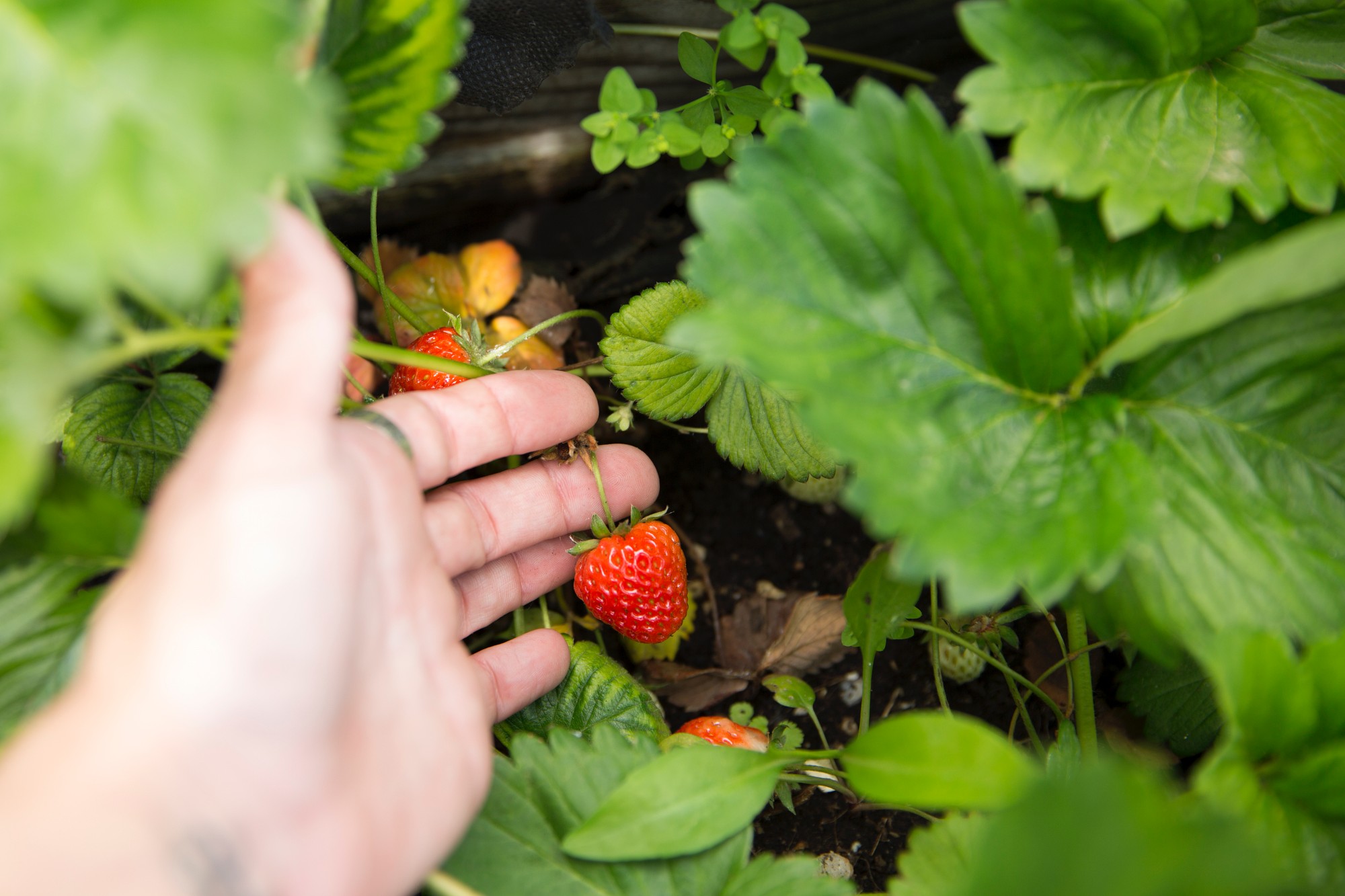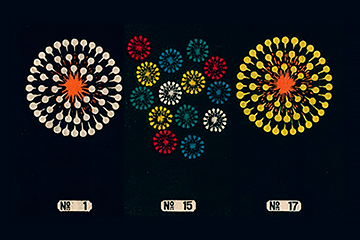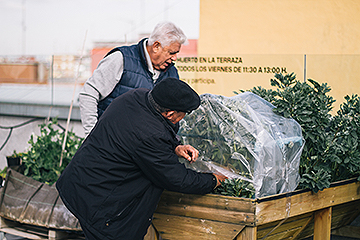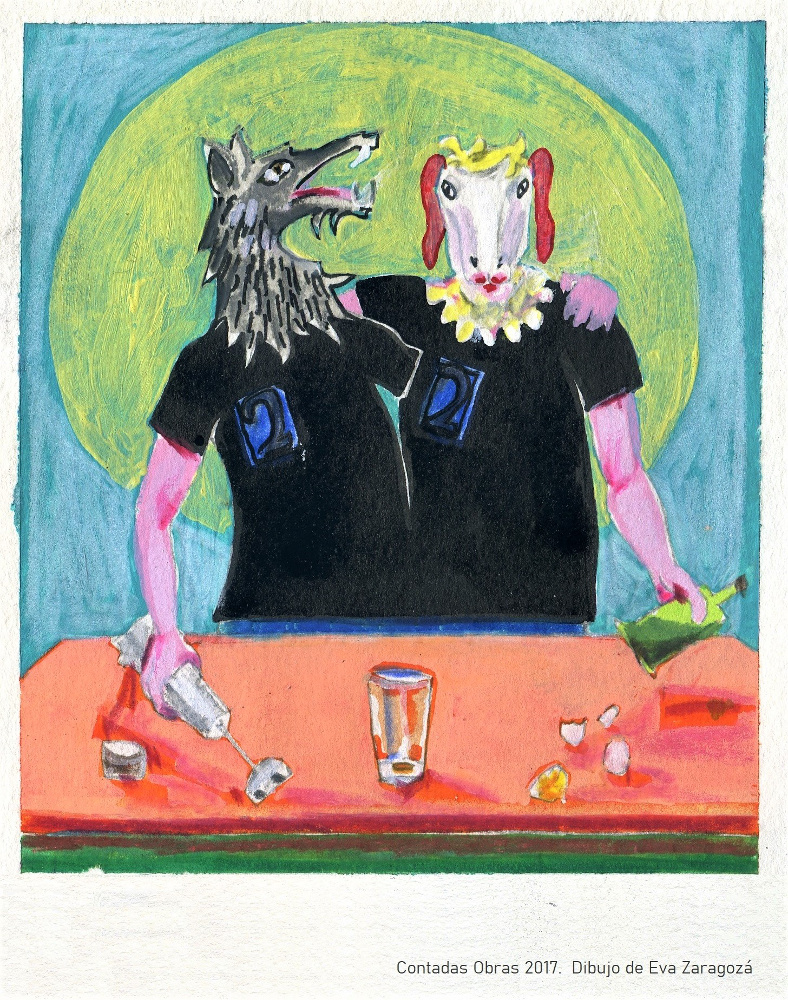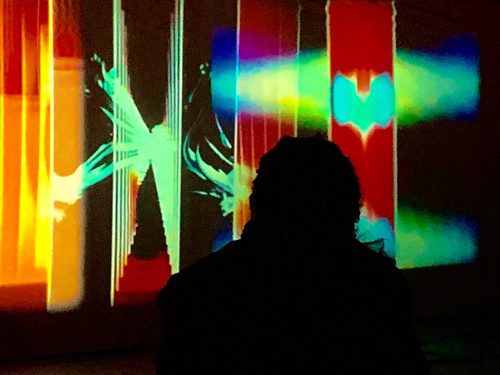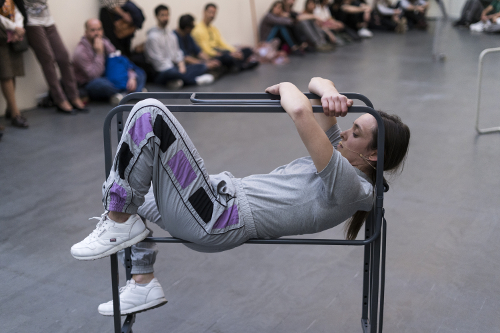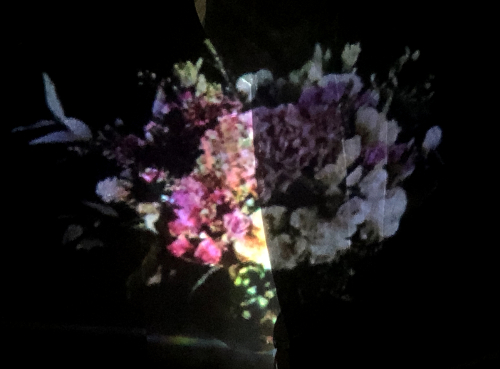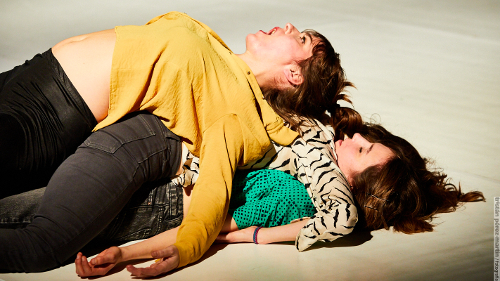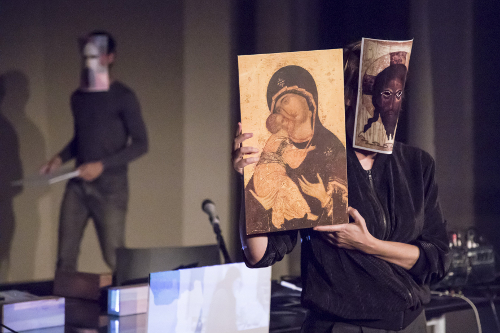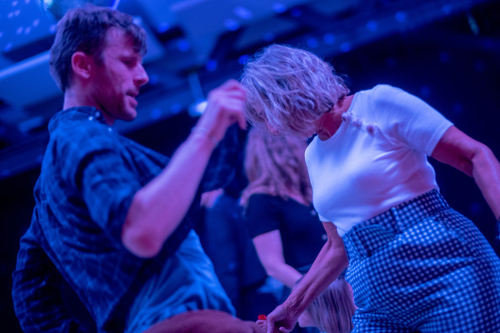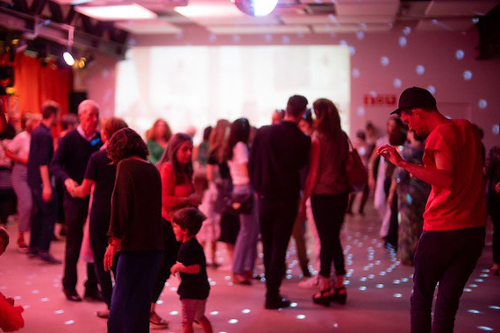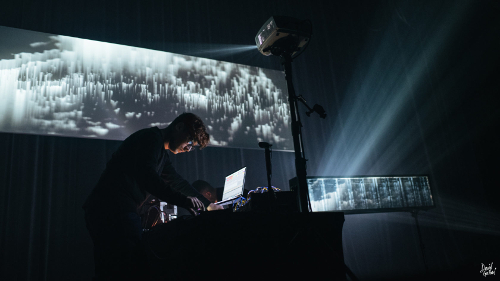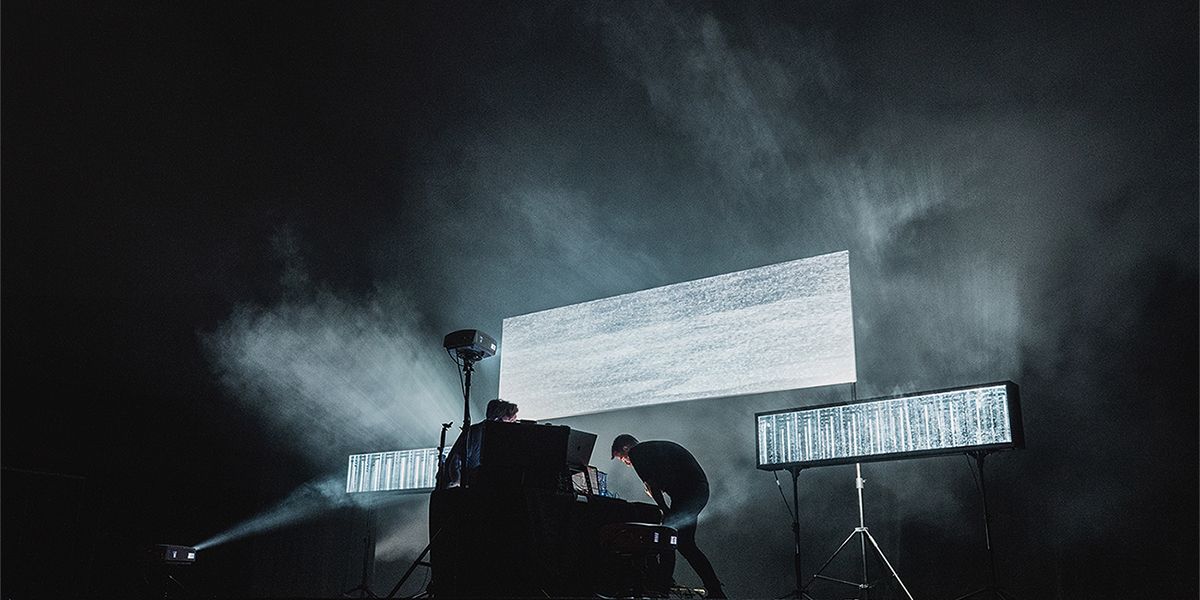Directed by Selina Blasco
As we all know, ‘what is and what is not’ is a question of as, how and when. It might be that art is, exists, without us people. It is more than likely. But if we feel that it is something that accompanies us, that it is there by our side, it is because it calls out and says something to us. As it does so in its own way, we—ever attentive to the signals it emits—listen and feel free to respond in many different ways. Sometimes we try to so with its own tools and sometimes we look for ones that we think prevent us from going too far, that beat about the bush or even over the tree tops. We almost always reply to art and, to this end, we fall back on words, whether written or spoken. We start speaking from below, from within and from without—those places in which, some time ago now, Donna Haraway recommended that we should place our situated gaze. We use our body and mind to translate what art says to us and, while we are dealing with it, things arise about ourselves about which we had never stopped to think. Knowing it and knowing ourselves. We judge and we even try not only to come up with a criterion which furthermore, and this is even more complicated, must also be intelligible and be able to be shared in order to strike up conversations with others that have more than two speakers.
Let’s face it, communication is not simple. We don’t understand well or we don’t understand altogether. And it is a problem, but problems are precisely what means that questions like “But … Is this art?” leave open a lot more questions. And so we continue, looking forward to more and more questions that will keep coming up. And just as a kind of spark, we will recover one which we read in a conversation guided by Carlos Rod and Ángela Segovia: Do we only speak about that for which we have a vocabulary? There you have it.
CA2M organises educational activities on contemporary art and thinking that can be framed within the tradition of community colleges. The courses it offers address some of the key issues for a proper understanding and interpretation of art today. These activities can be divided into two parts: the first consists of the presentation of a theme by a guest speaker and the second part involves a debate open to the audience. But this structure can also change to adapt to more experimental formats depending on the guest at each session.
SESSIONS
19 FEBRUARY
Selina Blasco | Described images
Ancient rhetoricians argued that conceiving different figures of discourse was a moderate exercise that served as training to overcome greater difficulties. Among them, description was defined as a kind of narration able to translate the visible. Its literary attributes were clarity and vividness, and the style of writing had to adapt to the nature of the theme. This description, which also demanded for the thing to be described to be treated as an inanimate object devoid of will, was not conceived for works of art. When the description is specialized in this type of artefact (especially paintings), evoking something that is believed to be full of life demands going beyond the sense of sight; it is necessary to complete what one sees.
The history of this kind of discourse is very long, but above all else we are interested in its potential to be elaborated in the present. What do we say about art when we describe it? What contents have to do with visual, material and narrative aspects and what is the “part” that corresponds to the sentient? How do we give a name to the cry, the pain or the pleasure, separately or all together? And what do we do with movement? Even though we know that there is no such thing as a transparent text, would it be possible to recover one that might be close to the piece and to the immediacy of the impression? Something that could provide a response to the erotic of art that Susan Sontag called for (no less than in 1964) to replace hermeneutics, interpretation?
Selina Blasco is a lecturer at the School of Fine Arts at Universidad Complutense de Madrid.
26 FEBRUARY
Gloria G. Durán | On Elegance, High Heels and Bling-Bling
We are going to make the most of the exhibition Absurd Humour: A Constellation of Folly in Spain, curated by Mery Cuesta, to try to tell things in a different way. A way in which the role of women, forming a constellation of true future cuplé stars, becomes critical for a proper understanding of what is happening today, right now, in Spain. We have rarely been told that in the so-called Silver Age at the beginning of the twentieth century we had our own foulmouthed and lewd trap artists who were stars in a glowing firmament that filled the thousands of theatres, fleapits and cafés chantants that sprung up in every town and city in Spain. We were never told that it would be intellectuals that encouraged many of them to make their debut. Just as today Ernesto Castro Flores champions Bad Gyal, in his day Azorín championed La Chelito. The moment of splendour in which high and low culture met, when a cuplé artist like Amalia de Isaura sings ¡¡Ultraismo Puro!! or Rodrigo Cuevas renders La Vaselina in the main auditorium at the University of Oviedo, speak of those memorable times in suspension that can give rise to another form of telling what we have always been told with a superficial brushstroke. We will explore the potential of talking about art with a gaze from below, from underneath, through and in crossfit. Be ready for surprises.
Gloria G. Durán is a Doctor in Fine Arts from UPV in Valencia, an expert in dandyism and countergender, salons and salonniêres, vanguard, cuplé, sicalipsis innuendo and net-artivism from a gender perspective. She multi-jobs in the service of art teaching at UCM, USAL and Escuela Sur.
4 MARCH
Iniciativa Sexual Femenina | Each Body in its Own Cry and God in Everyone’s
St Teresa, the squatter mystic, must have had her good reasons to think that the body was a prison. As good as the reasons of the declassed Madame Bovary to start to desire her husband only when she was burning with desire for a lover. And how could we not understand Gottfried Benn, the Nazi forensic pathologist who wrote poems to the spectacle of human putrefaction; or Angélica Liddell, evangelist number five, singing to necrophilia. We don’t know for sure what the body actually is, but we do know that the body is a problem: a tool, a source, the cheapest instrument with which to make (or consecrate ourselves to) art. The dancer shares with the corpse a wonderful linguistic coincidence: the two are spoken of as “bodies”. Is everything that moves a body? Is all that glitters gold?
Iniciativa Sexual Femenina (Élise Moreau, Cristina Morales and Elisa Keisanen) is a contemporary dance collective with a feminist, libertarian and anti-academic outlook. Their first piece, Catalina (2019) explores sexual pleasure, repression and its consequences both on stage and in real life. The second, Pato – merengue para espéculos vaginales, also from 2019, is their way of celebrating the centenary of the Mujeres libres anarcho-feminist journal.
11 MARCH
Joaquín Jesús Sánchez | I Understand Things when I Write Them: A Personal Approximation to Art Criticism
What does an art critic do? This very question has intrigued various generations. Do they measure artworks with strange implements? Do they cruelly interrogate artists until getting to the bottom of their true intentions? Do they rub crystal balls in the intimacy of their offices? In this session we will try to demonstrate that, as is usually the case, reality is a lot more straightforward. We endeavour to explain how the entelechy called “criteria” is formed, what is the modus operandi of someone who practices this trade, and we will confess how the hell a critic actually writes. As the work of a critic is basically a work of writing, we will focus on the complications involved in summarising, commenting on and evaluating an exhibition. To this end, we will take a look at some interesting, and even praiseworthy, examples. Afterwards, you will have an insight into the most carefully-guarded and shameful secrets of art criticism: for instance, that it is almost always written by people in pyjamas with dishevelled hair.
Joaquín Jesús Sánchez is an art critic, writer and exhibition curator. He writes regularly for ArtForum and Babelia, as well as other cultural publications. His exciting adventures can be followed on unmaletinmarron.com
18 MARCH
Víctor Iriarte | Cinema of Memory
The situation is the following: someone, somebody close, asks us, maybe by phone, maybe during a stroll together, maybe during a car ride, about a film. This is the starting point for Cinema of Memory: the exercise that we sometimes undertake when we are asked a question about a movie we have seen and which, after the question, we start to talk about in words. This translation-transmutation of words to images is the origin of this theoretical endeavour on the relationship between cinema and orality and indeed with other artistic disciplines. I am interested in the gesture involved in the re-enactment, in the place in which the speaker and the listener situate themselves. During this session we will try to explore this gesture, which speaks to something very primitive and essential: the creation of images through the word. And now the question: In what way does cinema, as a popular art form and exercise in shared viewing, cut through us and become part of our personal biography? We will therefore try to trace how the cinema we have inside us every time we see and have to talk about a film becomes present in our lives and in other disciplines of contemporary art. This is where we will speak of the work of artists like Manuel Puig, Hiroshi Sugimoto, Stine Marie Jacobsen, Fiona Banner, Itziar Okariz, Cindy Sherman, Miranda July, Amaia Urra, Geoff Dyer, Beatriz Santiago, Marguerite Duras, Alexander Kluge, Édouard Levé, Alex Reynolds, Project Leve (Esperanza Collado), and so on.
Víctor Iriarte works watching films. His career combines programming with his own personal creation. In 2012 he premiered his first feature-length film, Invisible, at the FID festival in Marseilles. As an artist he has presented his works in various museums and art centres and the Incorpore publishers has just released his book Geometría.
25 MARCH
Coco Moya | On How Secrets Desire Us
To keep a secret, you have to tell it. Having a secret is to become part of a chain of custody; to have a secret is really more a case of the secret having you to transmit itself through you. This becoming a medium, putting yourself at its service, is what having a secret could mean. A secret is a currency: it circulates, without any inherent value in itself other than what it has in common between us, an intimacy, a belonging, a commitment. What is the potential of the secret for resistance? Is what is most visible the least vulnerable? From the strategies of art, the formless formats of the secret are operations to create meaning against all odds. Building meaning despite not existing in law. The efficacy of a code that overflows its ornamented camouflage. Why are artists so fond of secret societies? Do they like the ambiguity between existence and the invisible? To bring up a specific case, we could talk about Sociedad Secreta de la Ciudad de las Damas, a conclave of women whose most recognised achievement is to have kept in anonymity hundreds of women artists who did not wish to enter the annals of Art History.
Coco Moya is a musician and artist. He experiments with secrets, geomancy and altered perception, forms of knowledge and relations that exceed means of communication to convert us in a medium of communication.
1 APRIL
Contadas obras III
Contadas obras (Spoken artworks) is an initiative that came about from a bus trip and other coincidences, organized by Javier Pérez Iglesias, Raquel G. Ibáñez, Selina Blasco and Christian Fernández Mirón. On two prior occasions, a group of people got together to listen to others talk about a work of art that had made a special impression on them, for whatever reason. Each person speaks with their own voice and narrative recourses, because there are no images. The piece will be revealed with words, without being seen, through the story and only for those who are present to listen to it. Nor will there be any kind of register other than what the people who are present are able to recall when they leave the hall. And so we will have to keep all our senses alert, to allow ourselves to be carried along by the intensity aroused by a keen awareness of the ephemeral nature of the experience and activating the memory. Works will be spoken by Andrea Galaxina, Andrea Rodrigo, Carlos Copertone and Yuji Kawasima. This is its third iteration.
Andrea Galaxina is an art historian, fanzine fanatic and founder of the Bombas para Desayunar micro-publishers, from where she produces and conceives fanzines.
Andrea Rodrigo’s practice embraces contemporary choreography, dance and curatorship, working with curated programmes–like Saliva together with Ainhoa Hernández at CentroCentro, Madrid (2018)– and laboratories in the practice, writing and accompaniment of choreographers and artists like Valentina Desideri, Corazón del Sol and Claudia Pagès.
Carlos Copertone is a doctor from the University of Extremadura, specialized in city planning and zoning. He has edited books on art and architecture for Caniche Editorial and has also carried out curatorial work.
Yuji Kawasima is a doctor in Art History from Universidad Complutense de Madrid. He develops his work in the field of research, curatorship and teaching, with a special interest in gender and queer studies in Latin-American cultural contexts.
BUT... IS THIS ART?

